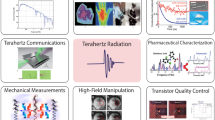Abstract
SAR raw data signal to noise ratio (SNR) after compression is of great importance since the choice of compression ratio is dependent on it during SAR system design and application analysis. The signal to quantization noise ratio (SQNR) generally used may not precisely indicate the relationship between signal and noise. Considering the thermal noise, a statistical model of quantization interval transfer probability is proposed in this paper. SNR mapping between SAR raw data before analog to digital converter (ADC) and after block adaptive quantization (BAQ) over the whole set of saturation degree is obtained using this model. When the power of echo is small with low SNR, after 1, 2, 3 or 4 bits BAQ compression, SNR has tiny difference among the four compression levels. When the power of the echo is medium with higher SNR, the SNR degradation after BAQ is about 5 dB with each bit decreasing from 4 bits. If voltage of the echo is higher than the clipping point of ADC, SNR after ADC and BAQ degrades stepwise. The higher the saturation degree of SAR raw data, the worse the SNR is. Simulated Gaussian data and real SAR raw data are used to verify the theoretical results, which are useful in the choice of BAQ compression ratio and further application analysis.
Similar content being viewed by others
References
Gray G A, Zeoli G W. Quantization and saturation noise DUE to analog-to-digital conversion. IEEE Trans Aerospace Electr Syst, 1971, AES-7: 222–223
Benz U, Strodl K, Moreira A. A comparison of several algorithms for SAR raw data compression. IEEE Trans Geosci Remote Sens, 1995, 33: 1266–1276
Kwok R, Johnson W T K. Block adaptive quantization of Magellan SAR data. IEEE Trans Geosci Remote Sens, 1989, 27: 375–383
Stuhr F, Jordan R, Werner M. SIR-C/X-SAR a multifaceted radar. In: Radar Conference, Record of the IEEE 1995 International, Alexandria, VA, USA, 1995. 53–61
McLeod I H, Cumming I G, Seymour M S. Envisat ASAR data reduction: impace on SAR interferometry. IEEE Trans Geosci Remote Sens, 1998, 36: 589–602
MacDonald, Dettwiler and Associates Ltd. Radarsat-2 Product Format Definition. RN-RP-51-2713. 2008
Lombardo P, Pastina D, Colone F. A study for COSMO-SKYMED SAR multi-beam of second generation. In: Proceedings of the 2nd International Workshop POLINSAR 2005 (ESASP-586), ESPIN, Frascati, Italy, 2005
Fritz T, Eineder M. TerraSAR-X ground segment basic product specification document. In: Cluster Applied Remote Sensing. TX-GS-DD-3302. 2008
Ying B, Ding X W. Simulation and implementation of BAQ algorithm. Telecommun Eng, 2008, 48: 70–73
Qi H M, Yu W D. Anti-saturation block adaptive quantization algorithm for SAR raw data compression over the whole set of saturation degree. Prog Nat Sci, 2009, 19: 1003–1009
Younis M, Boer J, Ortega C, et al. Determining the optimum compromise between SAR data compression and radiometric performance an approach based on the analysis of TerraSAR-X data. In: Geoscience and Remote Sensing Symposium. IGARSS. IEEE International, Boston, MA, 2008. 107–110
Bai X, Sun J P, Hong W, et al. On the TOPS mode spaceborne SAR. Sci China Ser F-Inf Sci, 2010, 53: 367–378
Zhang L, Jing W, Xing M D, et al. Unparallel trajectory bistatic spotlight SAR imaging. Sci China Ser F-Inf Sci, 2009, 52: 91–99
Suo Z Y, Li Z F, Bao Z, et al. SAR-GMTI investigation in hybrid along and cross-track baseline InSAR. Sci China Ser F-Inf Sci, 2009, 52: 1399–1408
Marco D, Neuhoff D L. Low-resolution scalar quantization for Gaussian sources and squared error. IEEE Trans Inf Theory, 2006, 52: 1689–1697
Nicoll J, Gens R, Denny P. Pre-processing compensation for saturation power loss in SAR data. In: Geoscience and Remote Sensing Symposium, IGARSS’ 02, IEEE International, Alaska, USA, 2002. 2744-2746
Qi H M, Yu W D. Study of effect of raw data compression on space-borne InSAR interferometry based on real data (in Chinese). J Electr Inf Tech, 2008, 30: 2693–2697
Dardari D. Joint clip and quantization effects characterization in OFDM receivers. IEEE Trans Circ Syst, 2006, 53: 1741–1748
Widrow B, Kollar I, Liu M C. Statistical theory of quantization. Stat Theory Quant, 1996, 45: 353–361
Snoeij P, Attema E, Guarnieri A M, et al. GMES sentinel-1 FDBAQ performance analysis. In: Radar Conference 2009 IEEE, Pasadena, California, USA, 2009. 1–6
Shimada M. Radiometric correction of saturated SAR data. IEEE Trans Geosci Remote Sens, 1999, 37: 467–478
Qi H M, Yu W D, Chen X. Piecewise linear mapping algorithm for SAR raw data compression. Sci China Ser F-Inf Sci, 2008, 51: 2126–2134
Qi H M, Yu W D. Adaptive frequency domain algorithm for SAR raw data compression based on two dimensions look-up table (in Chinese). J Electr Inf Tech, 2009, 31: 592–595
Author information
Authors and Affiliations
Corresponding author
Rights and permissions
About this article
Cite this article
Li, X., Qi, H., Hua, B. et al. A study of spaceborne SAR raw data compression error based on a statistical model of quantization interval transfer probability. Sci. China Inf. Sci. 53, 2352–2362 (2010). https://doi.org/10.1007/s11432-010-4082-x
Received:
Accepted:
Published:
Issue Date:
DOI: https://doi.org/10.1007/s11432-010-4082-x




